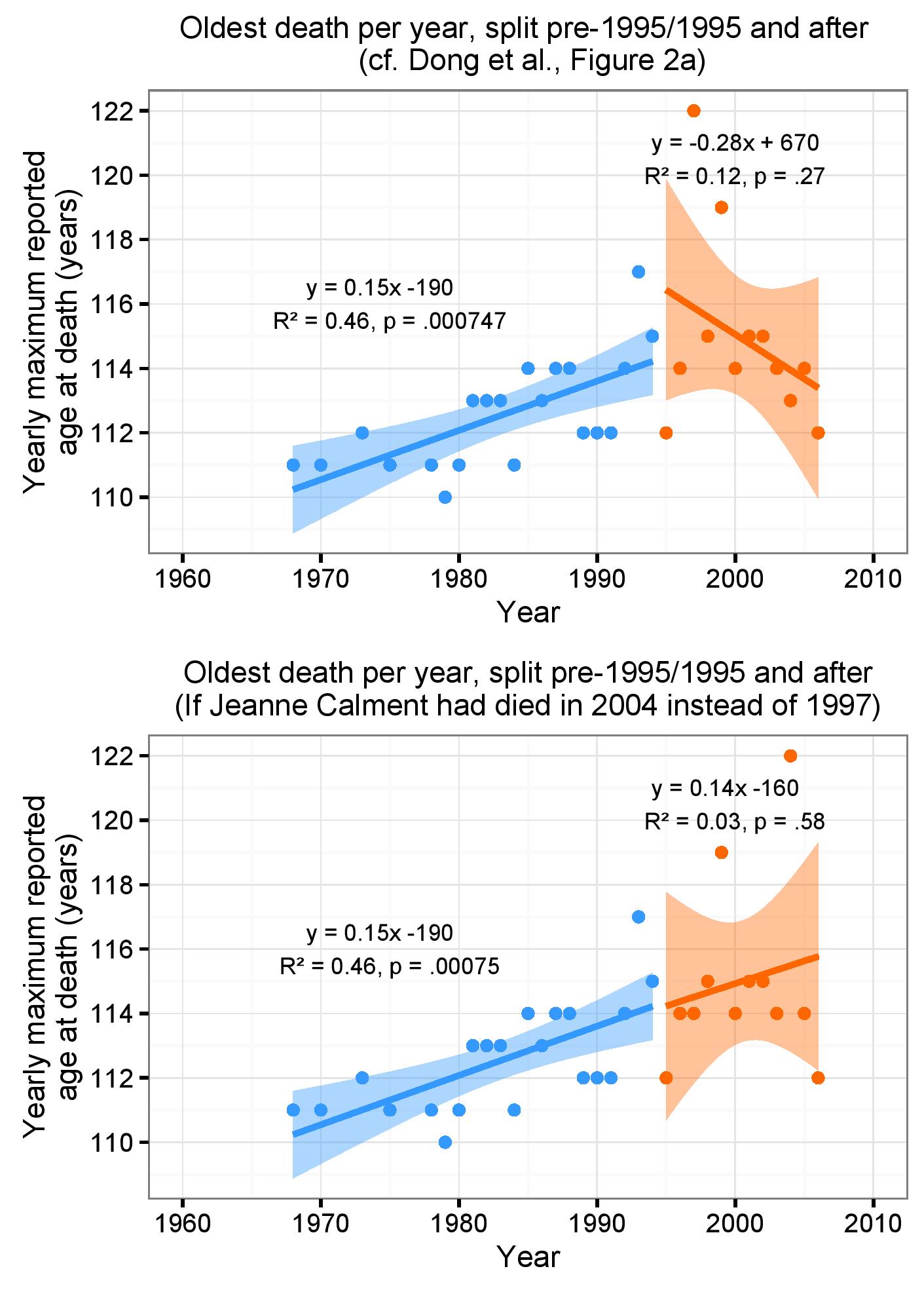Criticism of research on upper limit to human lifespan: one 122 year old woman has influenced the data
Nick Brown, a PhD student at the UMCG, and UG researcher Casper Albers, together with Stuart Ritchie of the University of Edinburgh, have described four serious flaws in research published in October 2016 by the prestigious scientific journal Nature. They evaluated the peer review process for the research and their criticism has been published 26 June, also in Nature.
For the article ‘Evidence for a limit to human lifespan’, the authors (Dong et al., 2016) had studied longitudinal mortality data and came to the conclusion that human lifespan has an upper limit of about 115 years. After a gradual increase in the maximum age over a number of decades, the researchers observed a slight decline in the last twenty years. This study received plenty of media attention, including criticism of the methodological underpinning (for example in the NRC newspaper, Van Santen, 2016).
The critical reflection
The critical reflection by Brown, Albers and Ritchie sets out four serious flaws:
First, Dong et al. used the same data set to generate their hypothesis and, subsequently, to test it. It is common statistical knowledge that this procedure is questionable: it leads to severe overfitting and too many false positive findings.
Second, the main claim in the Nature study is based on regression analyses with only n = 33 observations. It is clear that samples of this size are too small to make strong claims. Not only is the sample size small, the data also violate one of the properties required by the standard regression model: that of independent observations (or, actually, independent residuals). The data are the ages of the ‘oldest person’ alive, and as someone can only become the oldest person through the death of his/her predecessor, these data points are connected. Statistical models to deal with this type of data do exist, but were not used.
Third, the authors analyse a more extensive data set with an unnecessarily complicated regression model based on ‘smoothing splines’. The reanalyses by Brown et al. show that a basic linear model would fit just as well, or even slightly better.
The fourth flaw is the most important one. As can be seen in the top panel of the figure, the analyses by Dong et al. indicate a clear split in 1995. However, this clear split is fully driven by one single observation. Jeanne-Louise Calment was a French woman born in 1875 who died in 1997, at the remarkable age of 122. As far as is known, no other person has ever lived as long. Had she lived and died seven years later, thus from 1882 to 2004, the pattern found by Dong et al. (see figure, top panel) completely vanishes (bottom panel). Thus, the fact that this remarkable woman lived to the age of 122 has become, for Dong et al., a crucial component of their evidence that humans cannot live beyond 115.

Link to the article: No evidence for limited human lifespan
References:
Brown, N.J.L., Albers, C.J., Ritchie, S.J. (2017) No evidence for limited human lifespan . Nature.
Dong, X., Milholland, B. & Vijg, J. (2016). Evidence for a limit to human lifespan. Nature .
Van Santen, H. (2016). Nature article is wrong about 115 year limit on human lifespan. NRC Handelsblad .
| Last modified: | 20 June 2024 07.56 a.m. |
More news
-
17 March 2025
Liekuut | The high price of conflicts
According to Carsten de Dreu, Professor of Foundations of Cooperation and Social Organization at the University of Groningen, a lot can be learned from conflicts.
-
10 March 2025
Science for Society | Memory Lab for higher marks
Learning facts at school is something hardly anyone likes. The day before a test, pupils cram as many words or names as possible into their heads, only to hopefully remember them the next morning and then forget them again after the test.
-
05 March 2025
Women in Science
The UG celebrates International Women’s Day with a special photo series: Women in Science.
